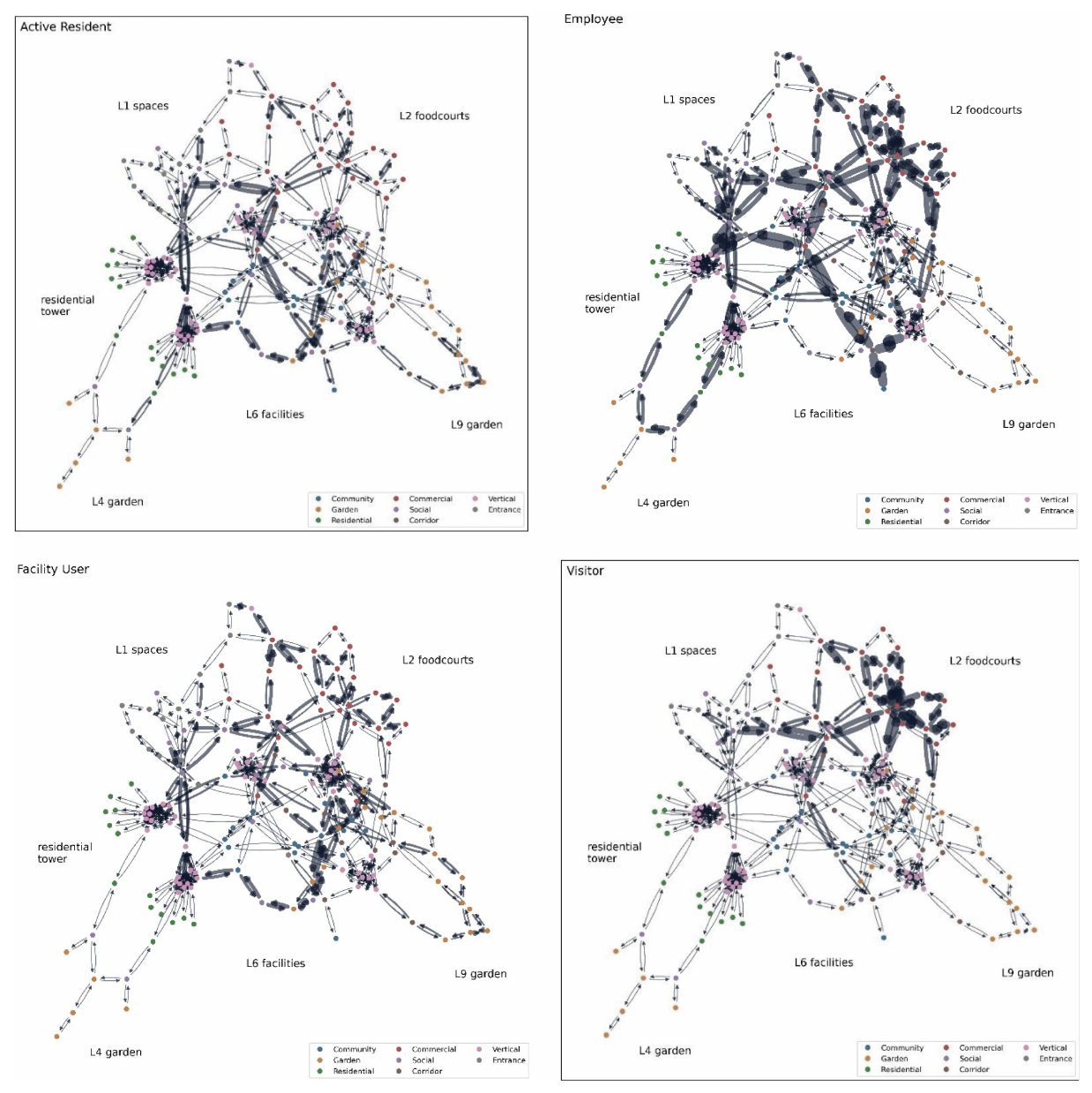
Paper
Gopalakrishnan, S. and Wong, D. and Chin, W. C. B. and Srikanth, A. D. and Manivannan, A. and Bouffanais, R. and Schroepfer, T. (2023). Vertical Cities: Emergent Patterns of Movement and Space Use in Dense Vertically Integrated Urban Built Environments, International Journal on Smart and Sustainable Cities. 1: 2340005.
Abstract
In high-density, land-scarce cities like Singapore, the successful translation of ground-level urban qualities and benefits into vertical living is crucial for social, economic, environmental, and ecological sustainability. This research introduces a Network science-based spatial analysis framework to evaluate the connectivity and relationships of vertically integrated urban open spaces. Kampung Admiralty (KA), a unique development integrating housing for the elderly with various facilities, serves as a case study. The methodology combines static spatial network measures and real-world movement data to predict movement flows, accessibility, and connectivity. Lift lobbies and elevated garden connectors emerged as critical paths, effectively distributing pedestrian flows. Landscape spaces played a key role in visual and physical connectivity, offering high recreational and social value. Strategic placement of “social attractors” improved space utilization. The study highlights the importance of spatial design parameters in user-space interactions and provides insights into socio-spatial networks at both ground and elevated levels. It identifies key connectors that facilitate effective planning and design of vertically integrated public space networks, promoting social and spatial effectiveness.
Read article here:
